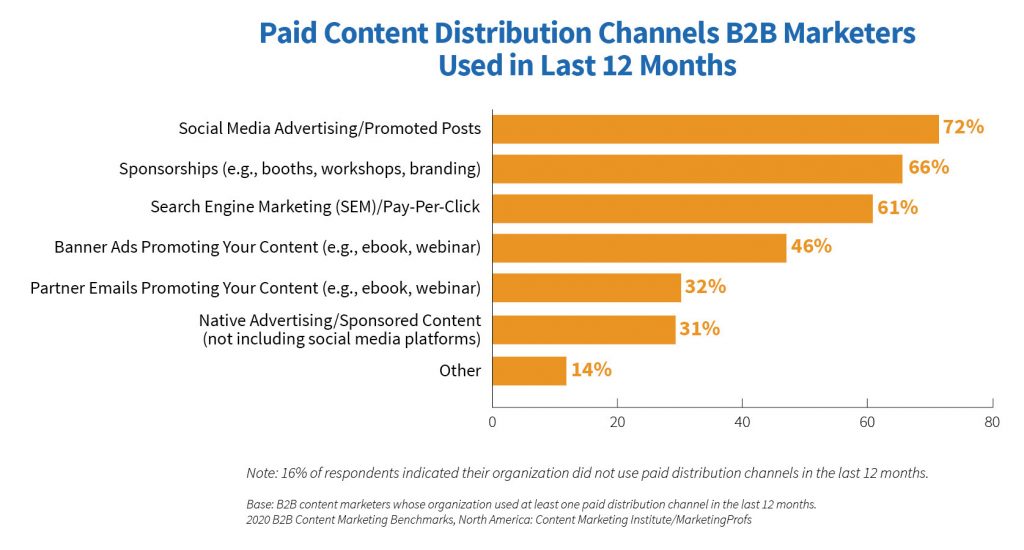4 Ways to Step Up Social Media Marketing for Tech Companies
The social media marketing landscape changes at a rapid pace.
From the early days of Myspace and Orkut, the social media landscape has now proliferated into multiple platforms each with its own unique use case and audience.
For a B2B tech company, it is important to be in sync with these changes or risk being drowned in the social media noise out there.
According to IDG, over 84% of C-level and VP-level buyers are influenced by social media when making a buying decision (source). That makes it imperative for any technology company to have a voice on social media.
4 Ways to Step Up Social Media Marketing for Tech Companies
1. Build a cohesive strategy
Because of the impact, social media can have on decision-makers, having a clear strategy in place based upon a sound understanding of your customer (customer personas) is a good place to start.
An ideal strategy will have rich quality content, metrics to measure impact, and an iterative process to tweak the strategy basis those metrics.
In the case of social media marketing for tech companies, a balance must be maintained between lead generation and brand awareness.
While both are important, you wouldn’t want to come off as too salesy to drive leads at the cost of impacting your brand image.
Content is king in such a scenario and the right kind of content built from an understanding of your customer pain points can do wonders for your social presence.
Great content delivered at the right place (social media channels) and at the right time (scheduling when your customers are most active) creates the right building blocks for a good strategy.
2. Select the right channels
Are your customers most active over the weekdays or weekends?
Are they super engaged during lunchtime or when they come back home from work?
Are they most active on LinkedIn or Twitter?
These are some of the questions that you must ask yourself while choosing which channels to focus on.
For B2B, LinkedIn leads by a great margin and gives some great targeting options and advertising formats as well (sponsored posts, carousel, etc.)
If you really know your customers well, you would also know which trade publications they read and associations they’re a part of. Explore advertising options on those channels as well for a greater ROI.

While LinkedIn can be a good platform to generate leads, Twitter, Instagram and Facebook are more suited for brand building.
Each platform has its own nuances as well (e.g. Twitter is a great platform to run a customer support handle).
Be mindful of each platform’s unique strengths and weaknesses while building a channel strategy.
3. Social Media Tools
You’ve got your strategy in place.
You know the channels you’re going to use.
And you also have great content ready to be put out into the world. How do you bring all these together?
A good social media management tool can help you build a content calendar, schedule your posts, measure performance across channels, and a lot more. Your tool of choice will determine your workflow and priorities.
Choose your social media management software depending upon your channel strategy and the team experience you’d like to build.
Consider the user experience, scalability, analytics, and integration with your CRM while making the choice. Here are a few good options to look at:
Hootsuite
Hootsuite is probably one of the most popular social media management tools out there, with over 18 million users. It’s relied upon by over 800 of the Fortune 1000 companies and is an all-in-one platform.
It can help monitor trending conversations and do competitive benchmarking, create and manage campaigns, and schedule and publish, all backed by a robust analytics suite.
Prices: Free plan, $29, $129, $599 per month, and enterprise pricing (with a 30-day free trial)
Buffer
Where Buffer really shines is its focus on user experience.
When using it for the first time you’re met with a clean, intuitive, and well laid out UI that makes it super easy to find what you’re looking for.
Building a social media calendar, scheduling posts, and pulling analytics are some of the features Buffer supports.
Prices: Forever free plan, $15, $99, $199, and $399 per month (with a 14-day free trial)
Hubspot
For larger organizations, Hubspot is a great tool to consider. Hubspot is known for its inbound marketing methodology and they practice what they preach! It has a comprehensive capability suite – from email and social media marketing to sales pipeline management. Their starter plan starts at $480/yr.
4. Measure and Analyze
No social media marketing strategy will be a success without data analysis.
Start by establishing metrics to track your marketing performance. These metrics can be MQLs and SQLs for the pipeline.
They can cost per acquisition, cost per click, and impressions to measure social channel performance.
Once that is done, use your historical data to establish benchmarks and start tracking performance.
Your performance metrics will show what’s working and what’s not. Use that data to tweak your tactics going ahead.
Building an environment that respects data and allows the flexibility to experiment is paramount!
Summary
Social media marketing for tech companies is unique in terms of the scale and challenges faced by the industry. Here are three takeaways from this article:
- Always use a customer-first approach while building your social media strategy. What kind of content does your customer like the most and where does she like to consume it?
- Data doesn’t lie – use your analytics and performance metrics as the foundation of your social media marketing.
- Your social media presence is an extension of your brand. Take care of it as zealously as you would of your brand image, and make sure your content is something that excites your customers.
Do you want to work on your social media strategy for Canada? Book a free call with us!



